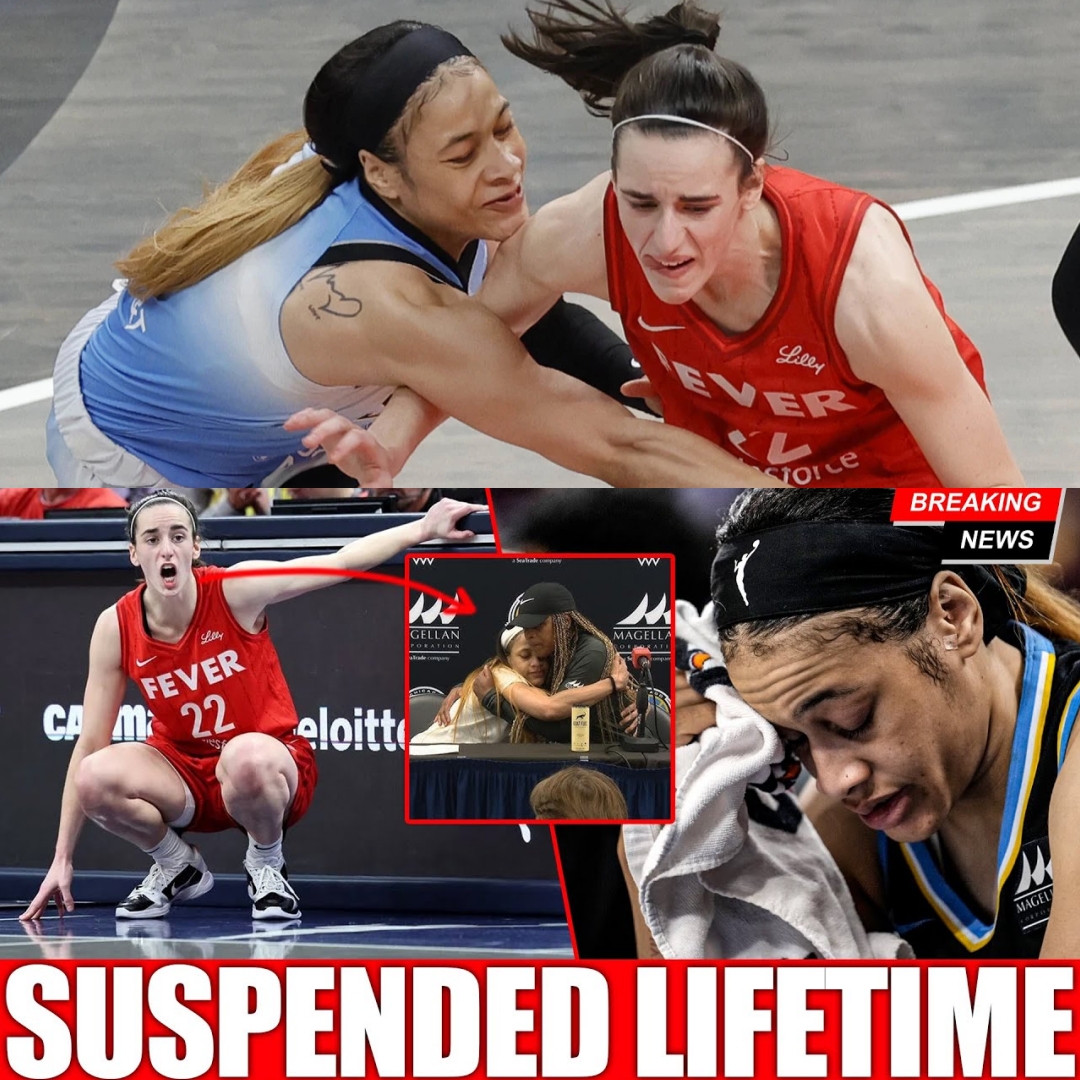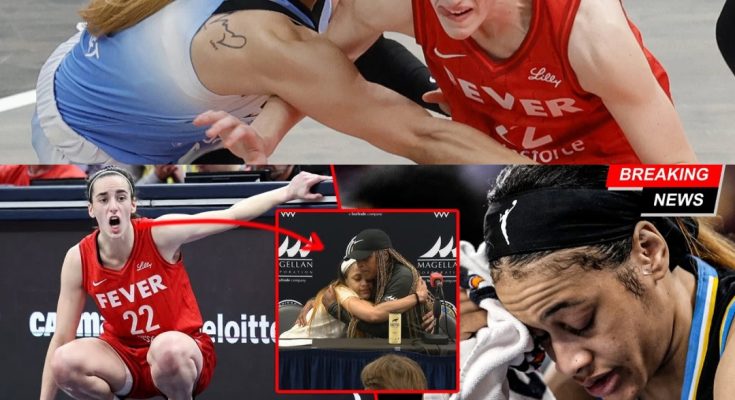
From Foul to Fallout: Chennedy Carter’s WNBA Exile and the Rise of Caitlin Clark
In the ever-evolving landscape of the WNBA, few stories have captured the attention of fans and media alike as the recent controversy involving Chennedy Carter and Caitlin Clark. What began as a routine game between the Indiana Fever and Chicago Sky escalated into one of the most talked-about moments in women’s basketball, ultimately leading to Carter’s effective exile from the league and solidifying Clark’s status as both a generational talent and a model of professionalism.
The incident that set the basketball world abuzz occurred during a seemingly ordinary transition play. Caitlin Clark, the Indiana Fever’s rookie sensation and the league’s biggest draw, was moving across the court, focused and away from the ball. Out of nowhere, Chennedy Carter, once considered a rising star, delivered a hard, unnecessary body check to Clark. The play was not only outside the flow of the game but also devoid of any provocation—no words exchanged, no visible tension, just a blatant act of frustration. The footage quickly went viral, sparking immediate backlash from fans, commentators, and basketball analysts across the country.
For Carter, this was not an isolated incident but rather the latest in a series of questionable decisions both on and off the court. Her career, marked by flashes of brilliance, has also been shadowed by controversy and reports of being a difficult teammate. Previous stints with the Atlanta Dream and Los Angeles Sparks ended poorly, with Carter either being benched or released due to off-court issues. The Chicago Sky represented a fresh start, but the altercation with Clark proved to be the final straw. In the aftermath, Carter found herself without a team, her phone silent as WNBA front offices collectively moved on.
The league’s response was subtle but unmistakable. While Carter was never officially banned or suspended by a formal announcement, the silence spoke volumes. No team extended a contract, no training camp invitations were sent, and even the media seemed to distance itself from the embattled guard. In an era where the WNBA is striving to grow its audience and elevate its brand, teams were unwilling to risk the distraction and drama Carter now represented. At just 26 years old and in her athletic prime, Carter found herself playing overseas in Mexico, a far cry from the national spotlight she once enjoyed.
Meanwhile, Caitlin Clark’s star continued to rise. Despite being the target of hard fouls and increased physicality throughout her rookie season, Clark responded with poise and performance. She refused to engage in off-court drama, letting her game do the talking. Clark’s composure in the face of adversity, especially following the Carter incident, only endeared her further to fans and media alike. She didn’t retaliate, didn’t complain, and didn’t allow herself to be distracted. Instead, she got up, dusted herself off, and returned to leading her team on the court.
Clark’s impact on the WNBA cannot be overstated. She shattered rookie records, including most points, assists, and double-doubles by a first-year player. She became the first rookie in league history to record multiple triple-doubles and was named both Rookie of the Month and Player of the Month—a rare feat in professional basketball. Clark’s performances drove record-breaking attendance and television ratings, bringing unprecedented attention to women’s basketball and inspiring a new generation of fans.
The contrast between Carter and Clark could not be more stark. While Carter’s career spiraled due to repeated lapses in judgment, Clark became the face of the WNBA through her talent, humility, and resilience. Clark’s ability to rise above the noise, focus on her craft, and elevate those around her set a new standard for professionalism in the league. She became a role model not just for her on-court achievements but for her off-court demeanor, showing that greatness is defined as much by character as by skill.
The fallout from the Carter-Clark incident also sparked broader discussions about the culture of the WNBA. Some commentators speculated about underlying tensions within the league, while others pointed to the importance of protecting star players and maintaining a positive image as the league grows. For the WNBA, the message was clear: there is little tolerance for behavior that undermines the league’s values or distracts from its mission to promote women’s sports at the highest level.
Carter’s refusal to take responsibility for her actions only deepened the divide. Rather than offering a public apology or showing contrition, she attempted to downplay the incident, calling it part of the game and comparing it to physical plays in the NBA. However, fans and analysts saw through the justifications. The footage was clear, and the intent behind the foul was unmistakable. The lack of accountability ultimately cost Carter her place in the league, serving as a cautionary tale for other players about the importance of professionalism and self-awareness.
On the other hand, Clark’s response became a defining moment in her young career. She continued to break records and lead her team, all while carrying herself with unmatched grace. Her popularity soared, drawing fans from across the country who traveled just to watch her play. Clark’s effect on the WNBA was transformative, helping to boost the league’s profile and attract new audiences.
As Carter’s career faded, Clark’s legend only grew. She was named Rookie of the Year, led the Indiana Fever to the playoffs, and became the most popular player in the league. Her jersey sales skyrocketed, and social media buzzed with highlights of her performances. Clark’s ability to handle adversity, stay focused, and inspire those around her made her not just a star, but a symbol of what women’s basketball can become.
In the end, the story of Chennedy Carter and Caitlin Clark is about more than a single foul or a moment of controversy. It’s about the choices athletes make, the values they embody, and the legacy they leave behind. While Carter’s actions led to her effective banishment from the WNBA, Clark’s resilience and excellence propelled her to new heights. The league, its fans, and the broader sports world took notice, choosing to rally behind a player who represents the best of the game.
As the WNBA continues to grow, the lessons of this saga will resonate for years to come. The rise of Caitlin Clark and the fall of Chennedy Carter serve as a reminder that talent alone is not enough; character, accountability, and professionalism matter just as much. And for Clark, the journey is just beginning, as she leads a new era in women’s basketball—one defined by grit, grace, and greatness.


